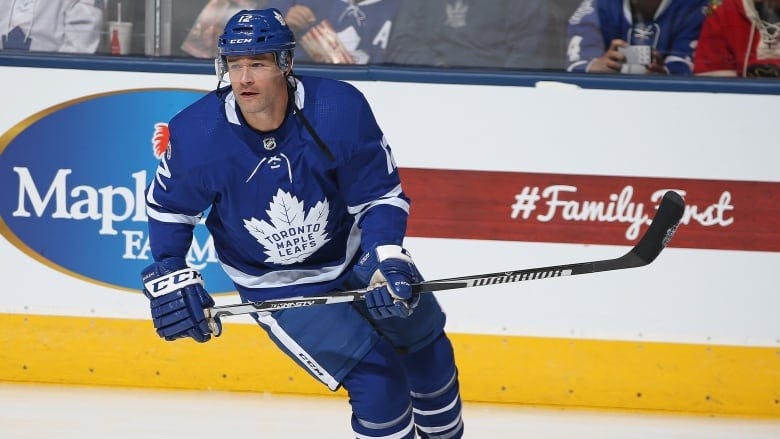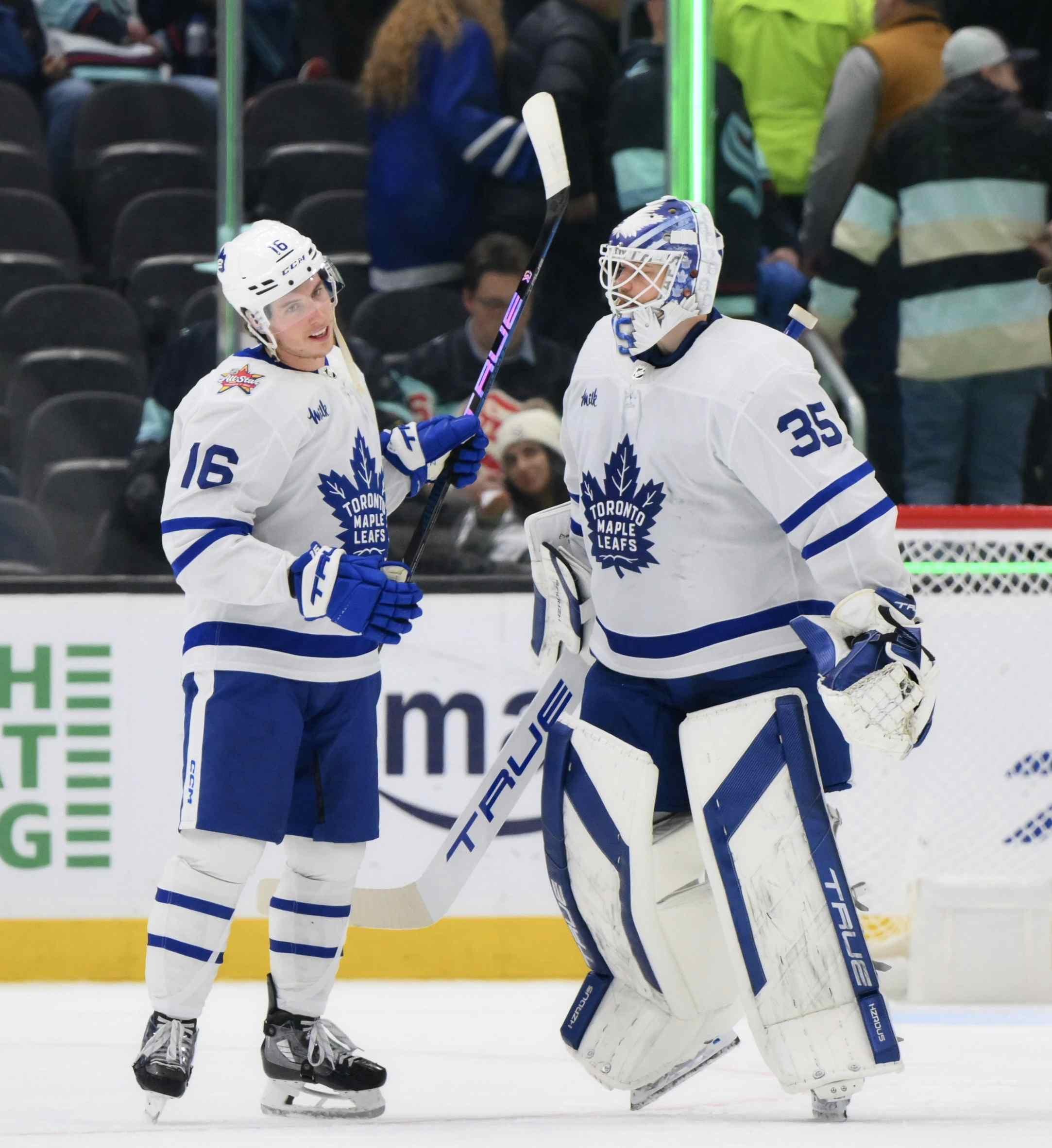What a potential Patrick Marleau trade could look like

In the modern NHL, there are many examples of high-price older players getting moved around because their former team needs some cap flexibility. The Leafs are in that exact situation right now.
With one year left on his three-year contract costing the Leafs $6.25-million in cap space, Patrick Marleau is on his way out of Toronto and it might take a different type of trade.
Unfortunate due to the hard cap system this league enforces, these trades are common enough that there appears to be one at least every offseason. Most likely a championship-hopeful team getting rid of some extra baggage so they can use that financial space to secure some better players — an easy enough strategy.
In theory and in practice, the team that has historically been in the Leafs’ position has to add a little bit of a sweetener, but it all depends on the particular player the other team will be acquiring.
So what are some examples of trades that might reflect what the eventual Marleau deal will look like?
It feels wrong comparing the future trade to these deals, but it’s the unfortunate inevitability of a similar transaction.
Brooks Orpik to the Avalanche
The most recent example of a trade like this is the trade that saw the Washington Capitals send overpaid and elderly defence man Brooks Oprik to the Colorado Avalanche. This was a weird deal, since the Avs bought-out Orpik almost immediately after acquiring him, allowing the blueliner to sign a much-cheaper contract back with the Caps.
Included in the deal was goaltender Phillip Grubauer to Colorado, who was seen as one of the annual backups that should be a starter somewhere else. That was the sweetener that caused the Avalanche to give a second-round pick in return for the two players.
It was really just Grubauer for that second and cap dollars taken away.
Wherever Marleau goes, it’s extremely unlikely that he will get bought out of his current deal. With only one year left, the team on the other end of the deal will take the cash pill and swallow it. He’s not necessarily a useless player, he was still playing on the third line mainly next to Nazem Kadri this past season and was able to score 16 goals and 37 points. Most teams that find themselves middling around the playoff bubble would gladly take him with a little bit of an extra bonus because of his cap hit.
Orpik was most likely just a small add-on for this trade that should really just be considered the Grubauer trade.
Bryan Bickell to the Hurricanes
One of the more infamous trades seeing a bad contract head to another team with a bonus of a prospect or pick, the Chicago Blackhawks were forced to deal a part of their championship teams to the Carolina Hurricanes alongside Teuvo Teravainen, a young forward that was about to burst into his prime.
For the two forwards, the Blackhawks received a second-round and a third-round pick. The way Teravainen has blossomed into a top-line forward with the Hurricanes this season, seems like a cheap price to pay.
If the Leafs want to shed the entire $6.25-million of cap space that Marleau is currently occupying, a prospect like Jeremy Bracco could be seen as an add-on that they could include. Teravainen had 115 NHL games for the Blackhawks, where Bracco has just become a top prospect this past season and is still arguably a couple years away from the NHL.
All of this is speculation, but to open up a massive portion of the cap for a player that is still a year or two away from even having any kind of effect on the Leafs, should not be seen as too high of a price to pay.
Marc Savard to the Panthers and Devils
This is a bit of a different example. Marc Savard was never going to step on the ice of an NHL arena ever again, but his contract was traded twice within twelve months.
Along with forward Reilly Smith, Savard was sent to the Florida Panthers from the Boston Bruins for then-prospect Jimmy Hayes back in the summer of 2015. The next offseason, Savard was packaged with a second-round pick to the New Jersey Devils for two no-name players that aren’t relevant at all. A true cap dump.
Unless Marleau suffers a career-ending injury in the offseason, the Savard deal can be seen as an unlikely reflection. But since Marleau is still considered overpaid, acquiring his contract deserves a second look and devalues the player.
Adding a pick to Marleau’s contract might still be necessary, the team acquiring the 39-year-old would need that extra incentive to add his contract for the one season, much like what the Devils got for acquiring Savard.
Pavel Datsyuk to the Coyotes
Similar to the Savard trade, the Detroit Red Wings sent legend Pavel Datsyuk’s contract during the 2016 draft to the Arizona Coyotes for a shuffling of draft picks. The 17th-overall pick was attached to Datsyuk for the 20th-overall pick and the 53rd-overall pick.
Moving down just three selection spots to get rid of Datsyuk’s one remaining year at a cap hit of $7.5-million might not have been extremely necessary for the Red Wings (they still suck). But it was still an example of getting rid of one remaining year of an aging overpaid forward — again, Marleau is still able to play but his contract does not reflect his on-ice production remotely.
For the Leafs, if they were able to attach one of their picks for the upcoming draft to Marleau and just move down much later, that would be considered highway robbery for Toronto. Without a first-round pick, the likelihood in this trade as an example might not be the perfect example.
But it is still one year remaining of a bad contract and paying to get rid of it with draft picks.
Whether any of these past examples are going to be similar to the eventual Marleau trade is still up in the air. But to see that a trade like this is possible and how wide the variety of success for either teams are, is interesting.
Depending on the trade, the team getting rid of the contract have both won or lost. But those factors mostly rely on future success down the road. Giving up future assets like prospects or picks might look risky, but in the context of when the trade happened, it makes sense for either team.
For the Leafs, whatever team Marleau eventually gets traded to is still getting a player to put on the ice. Not his past self anymore, but the forward can still play in the NHL and the cost of getting rid of the contract will go down because of it.
Knowing the past trades done by this current management team, the trade will come out of nowhere and will most likely be cost effective.
Recent articles from Thomas Williams





